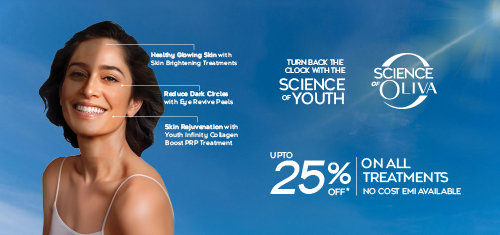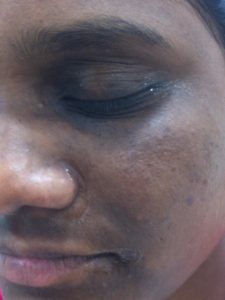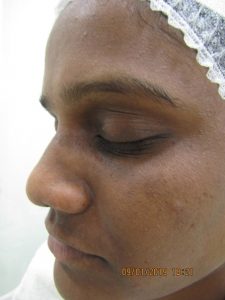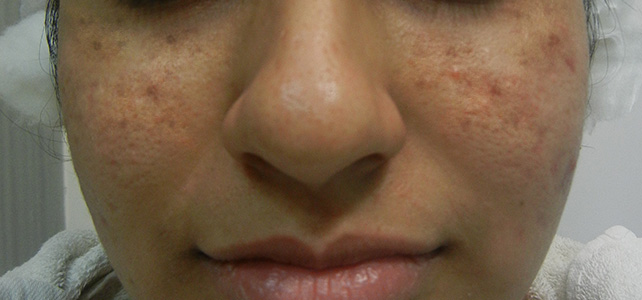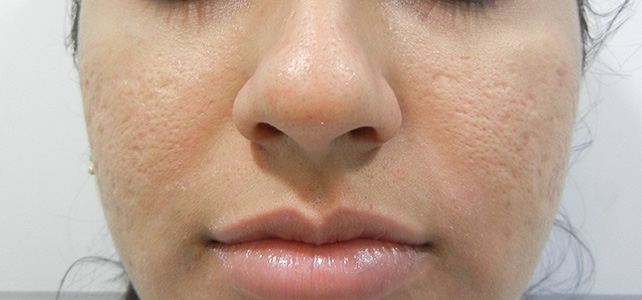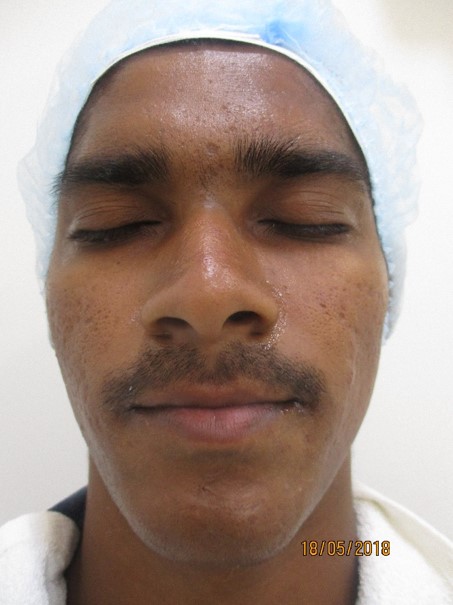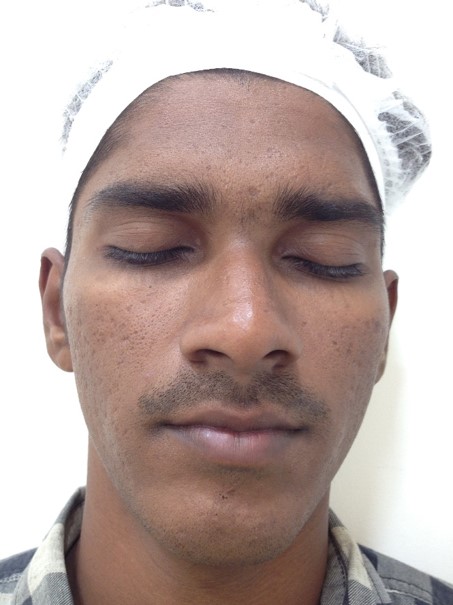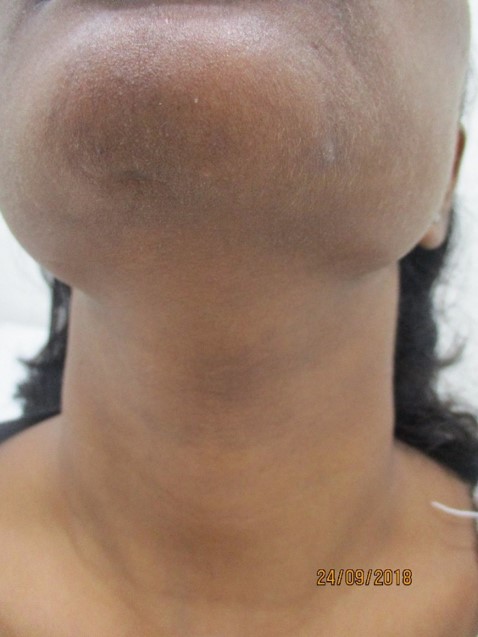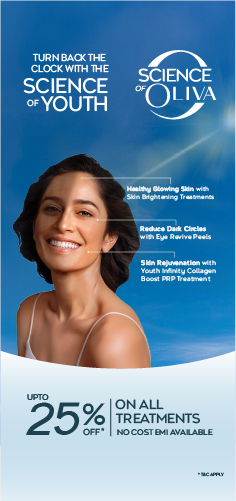Tan Removal Treatment: Cost, Procedure, Results & Prevention Tips
Table of Contents
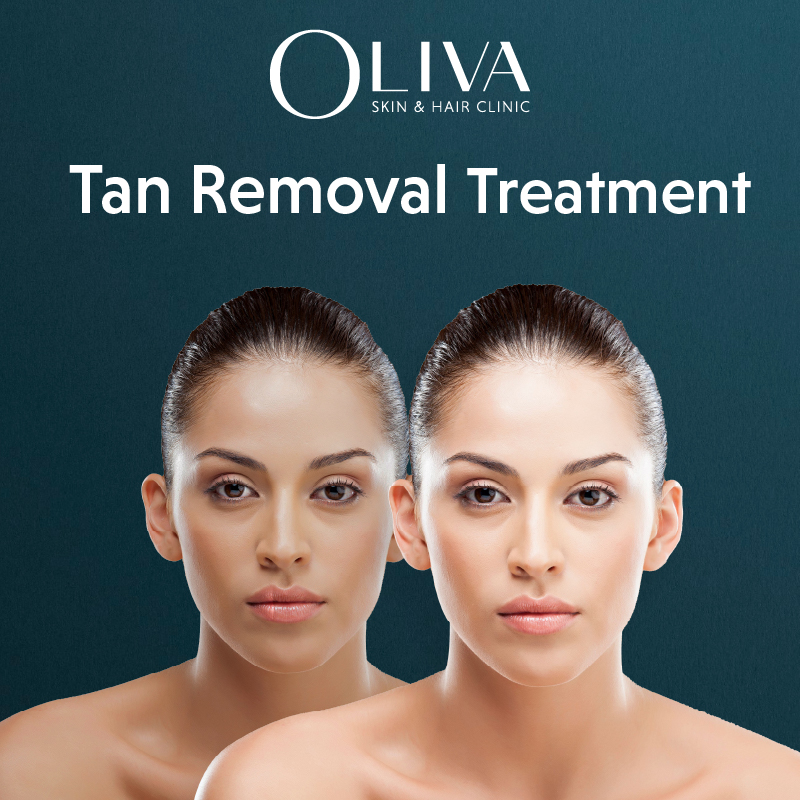
Tanning is a highly common skin concern worldwide. While it is not dangerous or fatal, prolonged sun exposure without enough protection can lead to skin damage. There are several tan removal treatments, which can improve your skin health while reducing tan. Read this article until the end to understand the causes and various skin tanning treatments available, and ensure that skin condition does not worsen.
What Is Tanning?
Tanning is when your skin darkens due to exposure to the harmful ultraviolet (UV) sun rays, which can damage the cells in our body. To protect us from this damage, the melanocytes in our skin produce melanin. This also darkens our skin, which is tanning.
What Causes Sun Tan?
Sun rays include UV rays, and over and extended exposure can harm the skin cells by disrupting our cell functioning. The melanin in our skin can absorb some of this UV light and protect the cells. But, when it goes beyond to protect the skin, the body produces even more melanin. This increased melanin darkens our skin and is known as tanning. Dark-skinned people produce more melanin, and thus tan more than light-skinned people.
The UV rays are of three different wavelengths: UVA, UVB and UVC.
- UVA rays are the most dangerous type of UV light as they can penetrate the deeper skin layers, damage cells and stimulate melanocytes directly to increase tanning.
- UVB rays are limited to the upper skin layers as they cannot penetrate the skin and thus don’t affect melanocytes directly. However, they can cause skin burn and redness due to DNA damage of superficial cells, which triggers the body to increase melanin production, further tanning the skin.
- UVC rays are present in much smaller amounts, but they can also directly affect melanocytes and cause tanning.
Why Should You Treat Your Tanned Skin?
Sunlight exposure and tanning can also cause several serious health risks:
-
Sunburns:
This is a painful effect of tan. The UV rays can irritate and damage the skin cells in the upper layer, causing increased blood flow, making the area red and tender. The damaged cells may slough off after a few days, where it appears as if your skin is peeling off. After this, the skin heals and becomes normal.
-
Skin Cancer:
UV rays can also alter the DNA of skin cells, which can increase the risk of skin cancer. There are two types of skin cancer – melanoma, produced from melanocytes (melanin-producing cells) and non-melanoma i.e. basal cell carcinoma and squamous cell carcinoma, which are produced from keratinocytes (normal skin cells). Sun-exposed body parts are more prone to non-melanoma cancers. Increased sun exposure also increases the risk of cancer.
-
Premature Ageing Signs:
Also called photo-ageing, this is a long-term effect of sun tan, caused by years of unprotected sun exposure. UV rays can gradually break down collagen and elastin fibres, darken and thicken the skin, leading to wrinkles, dark spots and thick leathery skin. Photo-ageing can make you look older than your actual age.
-
Actinic Or Solar Keratoses:
These are raised, scaly, dark bumps on the sun-exposed areas due to extended sun exposure. They are dangerous because they are pre-malignant lesions that can, over time, develop into skin cancers.
-
Weak Immunity:
Excessive sun exposure can weaken anyone’s immunity. This can lead to reactivation of infections like herpes, lower efficacy of vaccinations and even increase chances of cancer.
-
Eye Diseases:
Too much sun exposure can lead to photokeratitis or sunburn of the cornea. It may present with pain, burning, watering eyes and difficulty seeing. Over time, sun exposure can also lead to cataracts, which is clouding of the eye lens. This also causes difficulty of vision and may need surgery.
It is important to treat your tanned skin to avoid these side effects.
How To Remove Sun Tan From Face And Body?
It is a popular belief that sun tanning is irreversible, but that is not true. Sun tan removal is possible. There are several products, treatments, and solutions to reduce the pigmentation from sun tan. Any method to treat tan involves exfoliation of the top skin layer that removes excess melanin, provides a uniform skin tone and reduces premature ageing signs.
Listed below are some of the best treatments to remove tan from your face, neck, hands, feet and arms.
Sun Tan Removal Treatments By Dermatologists
-
Laser Toning:
Laser tan removal treatment is an excellent procedure for tan removal and skin rejuvenation. Experts use Q-switched Nd:YAG laser that systematically breaks down excess melanin, exfoliates and stimulates collagen renewal, leaving the skin bright and smooth. This treatment can remove tan, age spots, fine lines, and marks and post-inflammatory hyperpigmentation from acne. This treatment has no downtime, as the only visible signs after the procedure are temporary redness and swelling, that resolve in a few hours.
Dermatologists usually recommend 6-8 sessions for long-lasting results. The cost of laser tan removal in India ranges from Rs 5000-10000 per session depending on the concern, skin type, the required number of sessions, clinic reputation and the technology used.
Watch this video to learn more about the laser toning treatment procedure:
-
Chemical Peels:
This is another effective de tan treatment that involves the use of plant extracts to exfoliate the top layers in a controlled manner. Under the supervision of dermatologists, trained skin therapists clean the tanned area and then apply solutions containing different concentrations of glycolic acid, phenol, trichloroacetic acid. They customise the ingredients and the strength of the peels based on the severity of the tan. The peels penetrate the skin and exfoliate the damaged, tanned layer of the skin.
Some people may experience stinging and mild-burning sensation after the procedure and may require 5-7 days downtime. Skin may appear dry during this time, but new, brighter, healthier skin regenerates after.
You will need multiple sessions every few weeks for a few months for significant, long-lasting results.
Watch this video to learn more about the chemical peel treatment procedure:
-
Microdermabrasion:
This is also an exfoliating treatment, effective in removing tan and dead skin cells. It involves rubbing of a suction device against the skin. There are different ways of doing this treatment. Dermatologists use a diamond-tip handpiece to gently exfoliate the top layer. They may also use crystal microdermabrasion, where they gently spray fine crystals to remove the outer layers of the skin.
It is a painless procedure that takes about an hour and may leave your skin mildly red and irritated. You will need multiple sessions for the best results.
-
Photo-facial/IPL:
This involves using intense pulsed light to decrease the melanin from the skin. This usually needs more sessions than laser toning. There is no downtime.
To know more about tan removal treatment procedure watch this video:
Alternative Methods To Get Rid Of Sun Tan
Here are some alternative sun tan removal solutions:
- Tan Removal Creams: There are various sun tan removal creams and bleaches available in the market. Unfortunately, they only serve as a short-term solution. Tanning goes beyond the top layers of skin and these creams only work on the surface. Dermatologists usually recommend these in combination with other solutions.
- Face Pack, Wax and Face Wash: There are various cleansers and face packs that promise to remove tan. However, just like the creams, the results are short-lived as they too address only the top layers of the skin. These are superficial treatments and do not treat the root cause.
How To Remove Tan Naturally?
There are a few home remedies which can help reduce tan due to the active ingredients in them:
-
Honey:
Honey has exfoliating properties and can be used in homemade face packs to brighten the skin. However, it should not be used daily.
-
Lime Juice:
Lime juice is a very popular ingredient in homemade packs for lightening due to its Vitamin C content, which has lightening and antioxidant properties. But don’t apply it directly as it can irritate and damage your skin. Mix it with other ingredients like honey or dilute it with water.
-
Aloe Vera:
This is well known for its anti-inflammatory and soothing properties. It is also known to help reduce excessive melanin production, therefore reducing sunburns and tanning.
-
Turmeric:
Traditionally used in India since long for its skin-lightening properties, turmeric also works to reduce and prevent tan, and infections, while improving hydration. As it can stain the skin, people usually mix it with other products and use it.
-
Coconut Milk:
Coconut milk contains vitamin C and other exfoliating acids, which can help remove tan.
-
Besan:
Face packs with besan flour can help with exfoliation and also as brightening agent, removing tan.
While these are some common home-based tan removal ingredients, note that they may not be fully effective and also may not work for everyone the same way. Some people experience irritation, allergies and other side effects, worsening the skin.
Tan Removal Treatment Cost In India
The cost of advanced suntan removal treatment in India starts from INR 4,000 to INR 10,000. It varies based on the size of the target area, severity of tan, the clinic’s location and reputation, the doctor’s experience, treatment options and the technology used.
Reputed parlours use different face packs to offer de tanning treatments that cost between INR 1,000 and INR 2,500 for the face and Rs 700 to Rs 1,500 for the underarms and legs.
Depending on its composition and brand, any OTC tan removal cream or lotion falls between INR 100 and INR 2,000.
Here’s a cost comparison table for tan removal treatments in India. It includes the cost per session and the estimated total treatment cost, helping you to make an informed decision:
NOTE:
The pricing is indicative and varies from one city to another. We have considered the following cities to give you an idea of the pricing – Delhi, Mumbai, Hyderabad, Bangalore, Chennai, Pune, Kolkata, Kochi and Vizag.
Treatment |
Cost Per Session (INR) |
Total Treatment Cost (INR) |
| Laser Toning | 5,000 – 15,000 | 20,000 – 90,000 |
| Chemical Peel | 2,000 – 8,000 | 8,000 – 48,000 |
| Microdermabrasion | 2,000 – 5,000 | 8,000 – 30,000 |
| Photo-facial/IPL | 4,000 – 10,000 | 16,000 – 60,000 |
How Are The Before And After Results?
You can see the results of in-clinic treatments for tan removal in the images below:
How Long Will It Take For Tan To Go Away?
The duration of a sun tan removal treatment depends on the type of procedure as well as the area to be treated.
- Chemical Peels: Post your chemical peel treatment, usually after 1-2 sessions, you will notice a visible reduction in your skin tan. Dermatologists usually use chemical peels to remove sun tan from the face, and they might recommend you to undergo 4-6 sessions to see the results.
- Laser Toning: Post your laser toning treatment, you will immediately notice that there is a visible reduction of tan. Depending on the area of the body, you may require 4-6 sessions.
- Microdermabrasion: You may require 4-6 sessions of the microdermabrasion treatment to attain a visible reduction in your tan.
How To Prevent Sun Tanning?
Here are some tips to prevent sun tan and keep your skin bright:
-
Avoid Direct Sun Exposure:
Avoid going out during the peak hours of sunlight, usually between 10 am and 4 pm. During this time, the sunrays are at their maximum intensity and even sunscreen cannot give you enough protection. If you have to step out, look for shade and wear appropriate clothing.
-
Cover Up:
Wear full-sleeved clothes to reduce exposure to sunlight when you step out. Use UV-protected sunglasses to cover your eyes and face, and hats or caps to protect your face.
-
Use Sunscreen:
Apply sunscreen daily, whether you are indoors or outdoors. Use a sunscreen with SPF 30 or above. Apply sunscreen 15-20 minutes before you go out on all exposed body parts including face and neck, and reapply every 3 hours for sustained protection.
-
Protect Your Lips:
Don’t forget to use a lip balm with SPF.
-
Use Cosmetics With SPF:
If you use make-up regularly, look for products with SPF for extra protection.
-
Stay Hydrated:
Drink 15-20 glasses of water daily to keep skin healthy and hydrated.
-
Keep Skin Clean:
Wash your face daily twice to keep it clean.
-
Eat Foods With Antioxidants:
Eat seasonal fruits and vegetables with vitamins, minerals and antioxidants to improve and maintain your skin health.
Importance Of Sunscreen In Preventing Tanning:
Sunscreen offers several benefits:
-
UV Protection:
The sun’s UV rays are the most harmful, causing multiple skin concerns, ranging from sun tan to skin cancer. Sunscreen works as a protective barrier preventing the harmful rays from affecting skin health.
-
Prevents Premature Ageing:
Regular sun exposure can speed up the appearance of ageing signs such as wrinkles, fine lines and sagging, making us appear older than our actual age. Consistent use of sunscreen can keep your skin younger and brighter.
-
Protects From Sunburns:
Excessive sun exposure can cause sunburns, which may lead to the skin peeling off skin and irritation. Proper and regular use of sunscreen can prevent that.
-
Reduces Pigmentation Concerns:
Exposure to UV rays is responsible for pigmentation concerns like tan, freckles, age spots and melasma. Continued use of sunscreen can prevent pigmentation, keeping it even-toned, bright and youthful.
-
Prevents Skin Cancer:
Long-term exposure to UV rays can increase the risk of skin cancers like melanoma and squamous cell carcinoma, which can be prevented by regular use of sunscreen on exposed body parts.
Takeaway
It doesn’t matter what the current season is, or the weather condition where you live, it is critical to apply sunscreen. Dermatologists advise using sunscreen even if you are indoors, as exposure to electronic devices can also damage your skin.
Seek professional dermatological care to say goodbye to sun tan today!
Frequently Asked Questions On Tan Removal Treatment
The most effective treatments for tan removal are chemical peels and laser toning. But to maintain the results, it is necessary to have a suitable skin care regimen, especially the application of a good sunscreen.
No, sun tan is not permanent. If you start protecting your skin from excessive sun exposure, the tan fades away gradually. If you want a quicker resolution, you can opt for in-clinic treatments.
In-clinic procedures like chemical peels and laser toning can help treat your sun tan quickly. Using an SPF every day, even if you don’t step out in the sun, reduces sun tan to a large extent.
No, tanning is not good for the skin. It can result in premature ageing, pigmentation, and, in the worst cases, skin cancer.
Yes, regular use of sunscreen protects your skin from UV rays and prevents tanning. Over time, it also reduces existing tan.
Yes, in-clinic procedures, regular use of sunscreen and dermatologist-recommended lightening creams can help remove tan and restore your original skin tone.
You can permanently get rid of sun tan by adopting sun-safe practices like using sunscreen regularly, avoiding direct sun exposure etc. along with use of lightening creams and in-clinic treatments like chemical peels and laser toning (if necessary).
It is best to consult a dermatologist for a customised treatment regimen.
Sun burns go away on their own when you start protecting your skin from further sun exposure. You can use cold compresses and Aloe Vera gel to reduce it and also alleviate pain while your skin heals. Post-healing, lightening creams and procedures like laser toning can help treat the leftover pigmentation.
Start by regularly applying sunscreen to the affected area. For tan removal, you can also use lightening creams with glycolic acid, kojic acid, etc. Chemical peels and laser toning can give faster, better results.
Use sunscreen lotion on your legs regularly. Wear breathable clothes that fully cover your legs fully. Consult a dermatologist for your tan for topical lightening agents or procedures like chemical peels that can help reduce the tan.
Start by using a good sunscreen of SPF 30 or above, along with a suitable skincare regimen. Visit a dermatologist for a customised treatment regimen with lightening agents and in-clinic procedures.
Your tan may not be reducing because you are not getting adequate sun protection, or it may be severe and requires medical treatment. Consult a dermatologist for a customised treatment plan to remove your tan.
History
Current Version
August 19, 2024
Written By
Dr. Debatri DattaEdited By
Dr. Debatri DattaMedically Reviewed By
Dr. Debatri DattaJanuary 5, 2024
Written By
Dr. Debatri DattaEdited By
Dr. Debatri DattaMedically Reviewed By
Dr. Debatri DattaNovember 9, 2023
Written By
Dr. Debatri DattaEdited By
Dr. Debatri DattaMedically Reviewed By
Dr. Debatri DattaJune 28, 2024
Written By
Dr. Debatri DattaEdited By
Dr. Debatri DattaMedically Reviewed By
Dr. Debatri DattaRead This Next

Glutathione IV Drip: Cost, Benefits, Procedure & Side Effects

Permanent Skin Whitening Treatment Cost In India: Benefits & Results
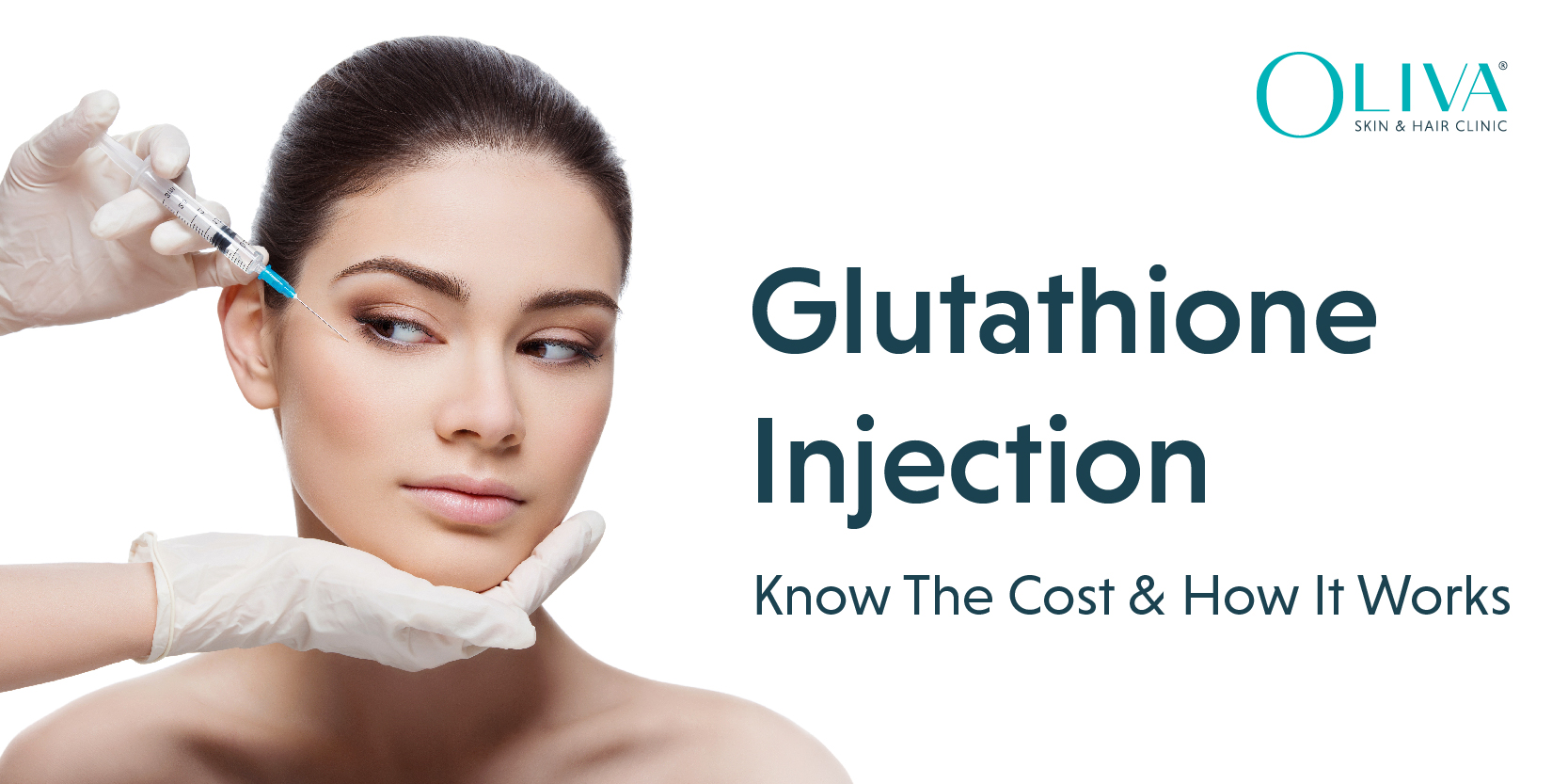
Glutathione Injection: Cost, Benefits, Side Effects & Effectiveness
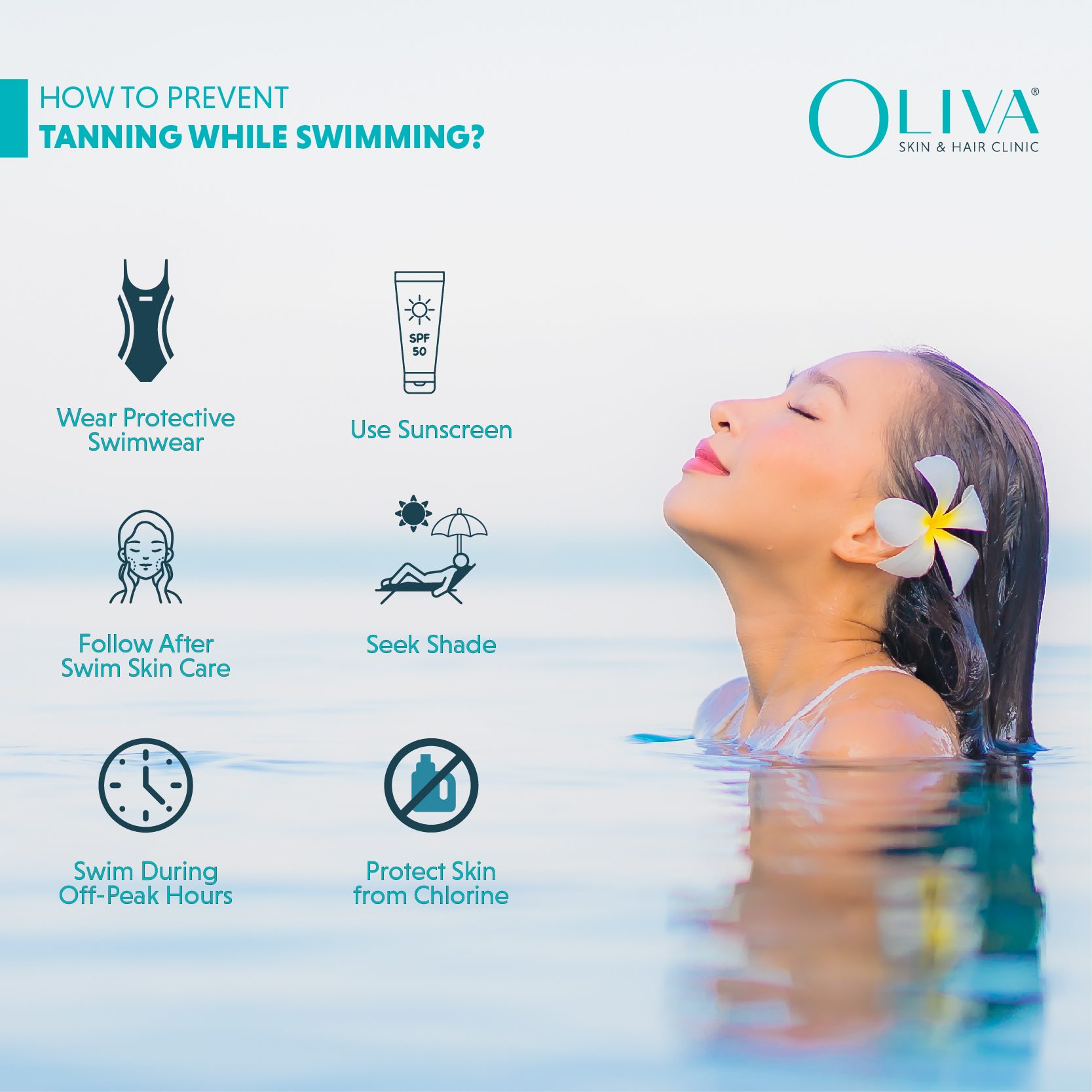
How to Prevent Tanning While Swimming: Expert Tips To Protect Skin

Q Switch Laser Treatment Cost & Side Effects: Price Starts At INR 4,500

